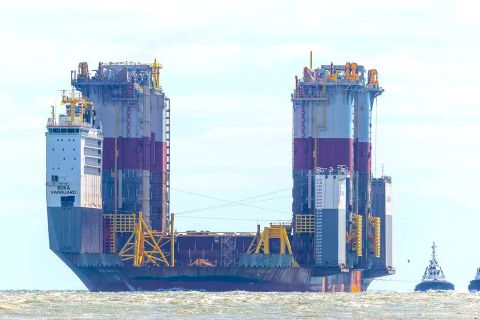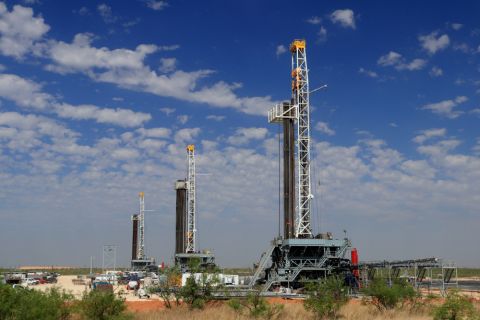Advances in land seismic acquisition are moving at a dizzying pace, but advances in compute power have been even more rapid. Whereas once processing capacity lagged behind channel count, it has now outpaced it, and oil companies have responded by requesting more and more channels to more densely sample their onshore fields.
Recent numbers have been staggering – Global Geophysical shot a survey for ExxonMobil in the Piceance Basin that required almost 80,000 channels. CGGVeritas shot a survey in Qatar using 40,000 channels. And Kuwait Oil Company is planning a massive 220,000-channel survey.
Land geophysical contractors have already proven to be adept at keeping up with these demands, creating “Super Crews” that cover huge areas acquiring data 24/7. But these crews are still hampered by the sheer amount of equipment required to acquire these giant surveys.
Sercel proposed a solution at the recent European Association of Geoscientists and Engineers conference in Vienna. The Giga Transverse replaces standard transverses, which record the data from the sensors in the field. It increases the data transmission rate on the transverse from 100 Mb/sec to 1 Gb/sec, increasing the capacity from 10,000 channels to 100,000 channels at 2 milliseconds in real time.
“We have to bring more productivity and make it more affordable for our customers,” said Arnand Surpas, senior vice president of global operations for Sercel.
Reducing the number of transverse cable in the field also leads to simplified deployment, he said.
Sercel CEO Pascal Rouiller added that the new transverse is “critical for the growing Super Crew market for high-density wide-azimuth acquisition.” Literature from Sercel added that the 1 million channel milestone is “no longer a dream but a fast-approaching reality.”
A million channels will deliver a massive amount of data. Can the industry learn how to manage, analyze, and interpret that data? We’ll save that for another blog.
Recommended Reading
Vår Selling Norne Assets to DNO
2024-05-08 - In exchange for Vår’s producing assets in the Norwegian Sea, DNO is paying $51 million and transferring to Vår its 22.6% interest in the Ringhorne East unit in the North Sea.
SLB OneSubsea JV to Kickstart North Sea Development
2024-05-07 - SLB OneSubsea, a joint venture including SLB and Subsea7, have been awarded a contract by OKEA that will develop the Bestla Project offshore Norway.
EOG: Utica Oil Can ‘Compete with the Best Plays in America’
2024-05-09 - Oil per lateral foot in the Utica is as good as top Permian wells, EOG Resources told analysts May 3 as the company is taking the play to three-mile laterals and longer.
Chevron, Total’s Anchor Up and (Almost) Running
2024-05-07 - During the Offshore Technology Conference 2024, project managers for Chevron’s Anchor Deepwater Project discussed the progress the project has made on its journey to reach first oil by mid-2024.
SM Energy Targets Prolific Dean in New Northern Midland Play
2024-05-09 - KeyBanc Capital Markets reports SM Energy’s wells “measure up well to anything being drilled in the Midland Basin by anybody today.”





